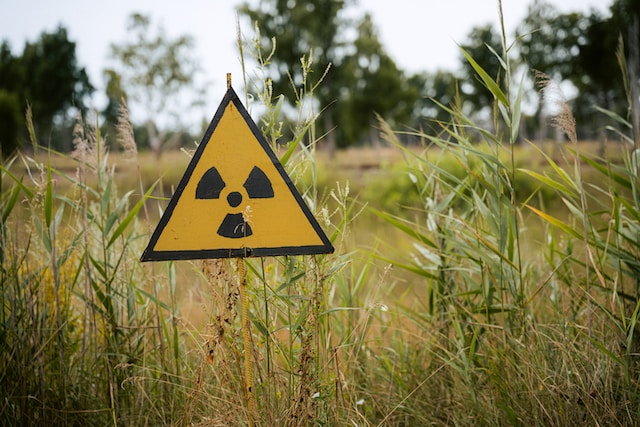Former Iranian President Ahmadinejad called for Israel’s annihilation, denied the Holocaust, and spoke of the “stinking corpse of the usurping and fake Israeli regime.” More recently, the Tehran Times published a front cover titled “Just one wrong move,” accompanied by a map of designated targets across Israel.
Iranian aggression presents a consistent and multifaceted threat to Israel and the West. As long-standing adversaries following the Islamic Revolution of 1978-79, relations between Israel and Iran have been permanently frayed, and following the outbreak of the Syrian Civil War, we have seen more open hostilities.
There is no doubt the Iranian regime wishes to see Israel’s demise and any military efforts by Iran must be seen through this lens.
A prime example of this is Iran’s extensive and costly involvement in the Syrian Civil War having lost over 2,400 IRGC troops. Estimates of Iranian funding for the Syrian regime range from $30 billion to $105 billion, but in the eyes of the Iranian military leadership this is a price worth paying to effectively protect its only true ally in region.
In May 2018, Iran’s elite Quds Force launched 20 missiles at Israel, and sent a further 4,000 troops to Syria in 2019 in a plot to open a Syrian front against Israel in the Golan heights, and to reinforce its forward base supplying Hezbollah. Involvement in the Civil War is a thinly veiled attempt at escalating conflicts with Israel.
Alongside this, the Iranian regime is the largest backer of international terrorism. Amongst its network of internationally sponsored terrorism number more than a dozen major militias supported with Iranian arms, expertise, training, and money. These operations are global, but the three most significant organisations are Hezbollah, Hamas, and the PIJ (Palestinian Islamic Jihad).
Iran funds Hezbollah to the tune of $700 million annually which, simply put, desires the total elimination of the state of Israel.
Funding Hezbollah has permitted Iran to launch a consistent campaign of aggression against Israel. Alongside Hezbollah, the Iranian regime funds Hamas and the PIJ who operate within Palestinian territory. These groups killed more Israeli citizens in the 2021 escalations than in the 50-day War, and in just one fifth of the time.
The IRGC’s Aerospace Force Commander stated, “all the missiles you might see in Gaza and Lebanon were created with Iran’s support”. Such ‘bragging’ demonstrates Iran’s violent intentions and highlights that without significant international pressure, Iranian support for terrorist organisations is unlikely to be curbed.
Of equal concern is the Iranian nuclear programme. In the early 2000s, the International Atomic Energy Authority ruled Iran had carried out activities relevant to the construction of an atomic bomb.
The JCPOA in 2015, attempted to limit Iran’s nuclear programme, yet given its leniency towards to the theocratic regime the US withdrew in 2018. Since the US withdrawal, Iran’s nuclear programme has flourished; levels of enriched uranium and key equipment exceed previously agreed levels.
Iranian possession of a nuclear weapon is dangerous on several levels. Firstly, Iran has a long history of supplying the terror groups it funds with its most advanced weaponry – if terror groups were to have access to such a WMD an unmitigated disaster would be likely.
Secondly, nuclear weapons will embolden Iran to take greater risks in its military actions across the region.
Thirdly, Iran has expressed its desire to wipe Israel off the map. Nuclear weapons would permit this in one disastrous swoop. Any nuclear programme under the current Iranian leadership is therefore a global threat even at the earliest of stages. Hence, if a re-negotiated deal is reached in Vienna, it must impose proper checks on Iranian nuclear sites and uranium enrichment to ensure that any easing of sanctions is not in vain.
Another vital Iranian offensive capability is its formidable network of ‘cyber warriors’. Christopher Krebs, the first Director of the Cybersecurity and Infrastructure Security Agency, stated “Iran has the capability and the tendency to launch destructive attacks” against both private corporations and governments.
Examples include attacks against Saudi Aramco, most recently in 2017, with malware that wiped data from 35,000 computers, and the Iranian Ashiyane Digital Security team defaced 23,352 US websites. Israel has frequently been the target of similar hacking attempts; it remains just a matter of time before a significant attack disrupts key Israeli infrastructure.
Finally, Iran is also able to disrupt key shipping lanes. In one week in August 2021, Iran launched two co-ordinated attacks against Israeli and Emirati owned ships. The first, a drone attack on MV Mercer Street was attacked off Oman by multiple drones. The strikes resulted in the deaths of two individuals: a Briton and a Romanian.
The second attack took the form of a IRGC hijack against MV Asphalt Princess. Iran may openly state its disdain for Israel, but these attacks demonstrate that in the face of indiscriminate Iranian aggression no nationalities, businesses or individuals are off limits. The international community should take heed.
The Iranian regime’s dogmatic hatred of Israel should be evident through rhetoric alone; however, it is even clearer that Iran acts upon this hatred and intends to do so further in the future.
Through the funding of organisations with the expressed objective of destroying Israel, to attacks on shipping, to cyber warfare, to its nuclear programme, and to its actions in the Syrian Civil War, Iran is not just a threat to Israel, but also to global peace.
Western countries must seek to build on and support Israel as a bastion of freedom in the Middle East, ensuring Israel can continue to counter the Iranian threat in its multiple forms.
